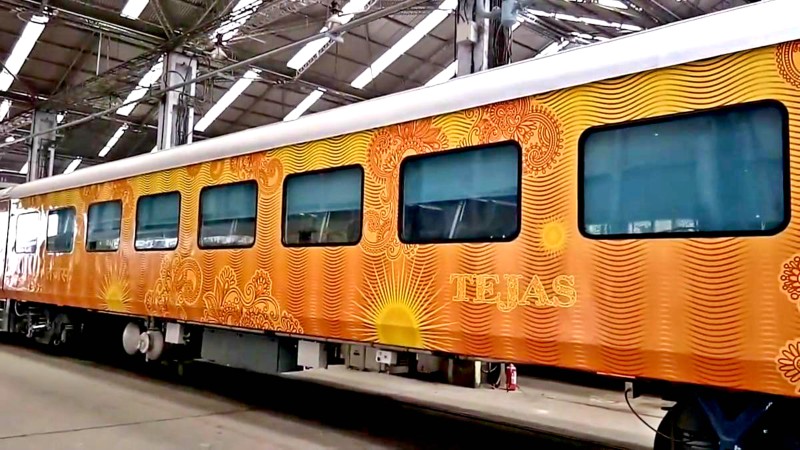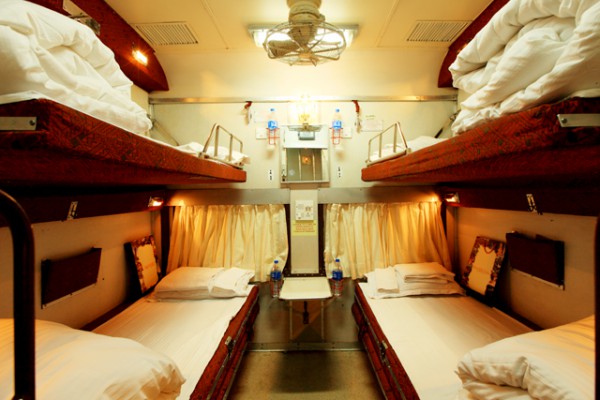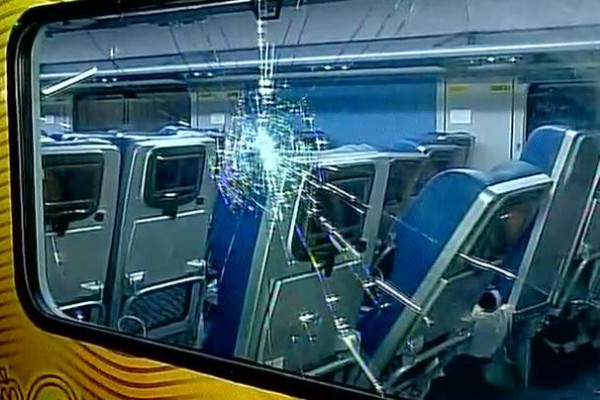
Railway ministry flagged their most aspirational train project bringing in the superfast Tejas Express into the existing fleet. It has a top speed of 200 kmph which makes it the fastest train in the country leaving behind the Shatabdi Express and Gatimaan Express. The train began its journey from Chhatrapati Shivaji Terminus on Monday and returned from Goa on Tuesday. The 19 coach train is manufactured at the rail coach factory in Kapurthala which has automatic entrance door.
The yellow colored train is equipped with LED TV’s, tea coffee vending machines, bio-vacuum toilets, Smoke and Fire detection system, GPS passenger information display and CCTV cameras for security purpose. Due to the big list of features, the train journey will cost 20% more than the Shatabdi Express. Unlike its predecessors, passengers will have the option of onboard food by the newly designed catering facility in the coach.
A journey from Mumbai to Karmali AC chair-car seat on the train costs Rs1, 190, while executive chair-car seat costs RS 2,590. The executive class fare in Tejas has been fixed at RS 2540 without food and RS 2940 with food. The journey from Mumbai to Ratnagiri on AC chair car seat costs RS 835, while executive seat costs RS 1,785. But the question is why would passengers want to spend such high amounts of money where they can get the same attention by reaching a destination by flight with the same fare and taking less than 2 hours.

The Tejas Express has redesigned seats with e-leather. There are 14 non-executive chair cars and they can seat up to 72 passengers each (3+2) configuration. The coaches have energy-efficient LED lights and digital destination display boards. In line with the train’s overall luxurious feel, the train’s toilets have also been given a modern feel. Equipped with soap dispensers, touch-less water taps, odour-control system and occupancy indicators, the toilets in Tejas Express are a step up from the usual chair car trains. Another airline-like feature in the Tejas Express is that each seat has an attendant call button facility. This call button/bell is integrated with the berth reading light.
Sometimes people say that good things don’t last forever and it seems that this implies especially to people who do not value the things they get at present. Similar conditions happened after the first trip of the train where the railway officials saw missing headphones, damaged infotainment screens and waste was thrown all over. The train also happened to have a cracked window pane and dents on the outer body. The claims by the government were still unfulfilled with where the best quality food was promised to the citizens but apparently, passengers opting for Non-veg food were given omelette with jam, butter and milk and the ones with vegetarian food were given upma with a rusk, a cup cake, tea, mix juice, butter and jam. The passengers on day 1 did not like the combination of food for which they had paid a high amount.

Passengers have also complained about the AC temperature and not being provided blankets on request to the housekeeping. The train having automatic doors and stopping at fewer junctions makes it difficult for people to buy outside food nor does the train have vendors selling food items inside the coach creating discomfort for passengers who have different experiences in other trains which comply. Some passengers complained of the Wi-Fi signal being weak and connection becoming lost after 15 minutes of usage. This shows the amount of work needed for the government to give a finishing touch the discrepancies which are left untouched.
We should not forget that the new train service is an initiative towards a faster India with luxurious features and speed but we still lag behind countries like China which has trains like Shanghai Maglev, also known as Shanghai Trans rapid and AGV Italo, said to be the most modern train in Europe, has a maximum operational speed of 360kmph. Railways in Europe are way advanced compared to Indian railways in terms of nearly everything (Speed, Comfort, Punctuality, Connectivity and Cleanliness etc).
The Chinese Railways are organized in a more modern and business-like manner. Five major railway corporations — one each for rolling stock, railway construction, goods and materials, civil engineering, signaling and telecommunications — have been separated from transport enterprises and made autonomous, although state-owned. We have the Railway Board, under the Ministry of Railways – the same structure that the British setup more than 100 years ago!!
India is slow in adopting new technologies is our concern towards safety. We do not accept any new technology unless it proves its worth over a period of time (Years). India also lacks separate corridor for Railways and sudden braking/controlling speed resulting to accidents.
The country is moving towards our Prime Minister’s dream project by bringing in the high-speed rail line also known as the bullet train which may start construction in 2018.





